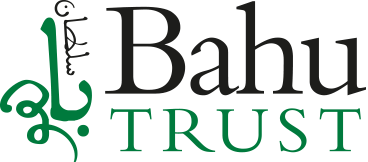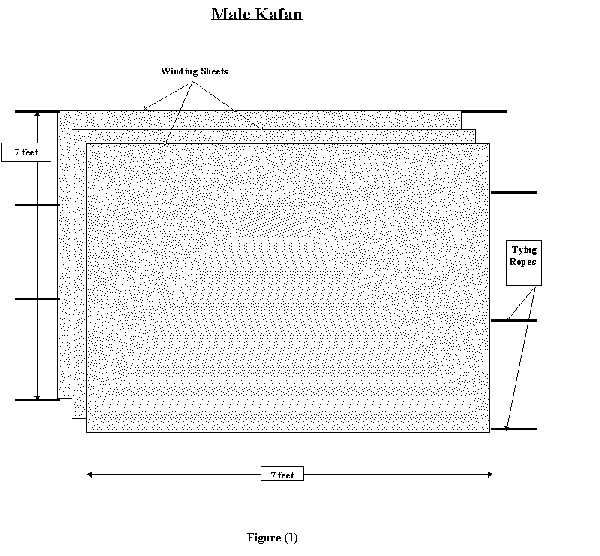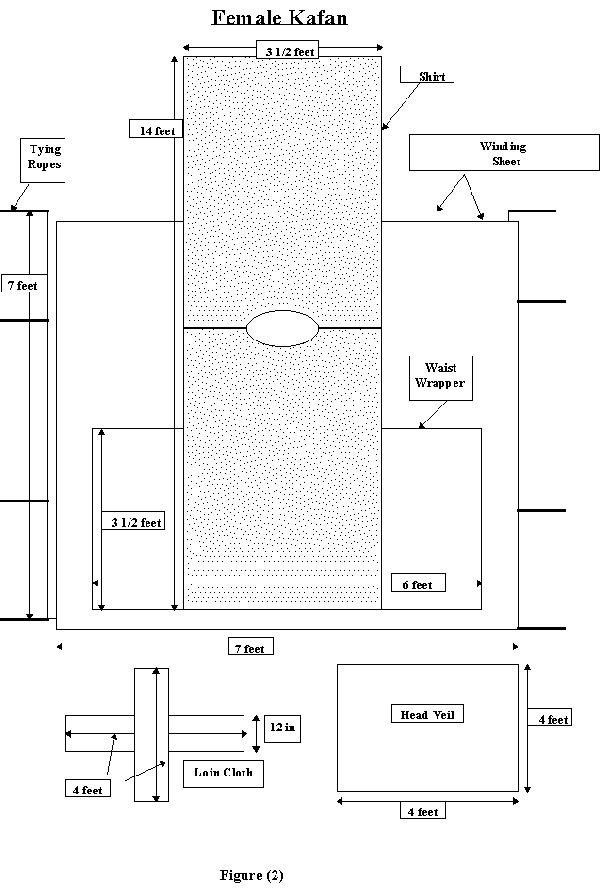At HSBT, we offer an extensive funeral service to the community. We acknowledge that this is a great time of difficulty for any individual and we aim to fully support our brothers and sisters throughout the entire process.
Please note: the funeral service is yet to be officially launched but we can still facilitate for you guest sittings and Du’a programmes. We do offer a funeral prayer upon request.
For further details please call the HSBT reception desk on 0121 440 4096, email us on info@bahutrust.org or visit us at:
17-21 Ombersley Road, Balsall Heath, Birmingham, B12 8UR.
Each and Every Step
What does one do at the time of someone’s Death?
Here is a short summary and breakdown of what usually takes place at the time of one’s death and funeral prayers. Every step of the process is explained from the very beginning to the end so please feel free to utilize this platform and familiarize yourself with the process.
According to the Islamic perspective, our life on this Earth is merely temporary and every living creature (Soul) must die and extinguish according to Allah’s (Most High) plan. The term death (‘Mawt’ in Arabic) occurs when a person or an animal dies (When the soul departs from the body). The body rots and decays, whilst the Ruh (spirit/soul) departs the body and travels to the ‘Alam – e – Arwah’ (world of souls). This is the beginning of the Akhira (afterlife). This is the beginning of the Alam e Barzakh, the awaiting period until the call to rise for the day of reckoning.
It must be instilled into our minds that the blessed bodies of the Prophets and messengers (peace and blessings be upon them) of Allah (swt) do not rot or decay. Their blessed bodies are preserved intact and are fresh as living beings. This is a unique protection and blessing from Allah (swt) upon his Awliya (Friends/Chosen Ones) and the Martyrs. The Prophets and messenger (peace and blessings be upon them) are always praying in their graves and are given subsistence by Allah (swt).
1. The Dying Person – ‘Al-Muhtadar’
When it is known that a person is about to die, his/her relatives and family friends should be informed to be at the bedside. They should be there to give their moral support to him/her and to pray for the ill. Those present should recite the following two Kalimahs (Articles of Faith):

“Laa ilaaha illallahu Muhammadur-Rasoolullah”
(There is no God but Allah (swt), Muhammad (saw) is the Messenger of Allah)
“Ash-hadu Allah ilaaha illallahu wahdahu laa shareeka lahu wa ash-hadu anna Muhammadanabduhu wa rasooluhu”
(I bear witness that there is no god but Allah, He is alone, He has no partner, and I bear witness that Muhammad (peace be upon him) is His Servant and messenger)

If the Muhtadar can recite the Kalimas easily then this is good otherwise one should not force him to recite them. Making the Muhtadar aware of the Kalimas is called ‘Talqeen’. It is imperative that the Talqeen is done before the person dies.
When a person is about to die, his/her body should be laid on the back with the face turned towards the Qibla (direction of Mecca). The people who are present may use a pleasant scented incense stick or an air freshener to fragrance the room where the Muhtadar is lying down. Once the Muhtadar has died, his/her eyes and mouth must be closed and the jaws tied to the head with a piece of cloth. It is also preferable to tie the legs/toes together and to place a clean sheet or cloth over the body. When it has been confirmed that the person has died, it is recommended to recite prayers/invocations for the deceased like, ‘Innaa lillaahi wa innaa ilaihi raajioon’ (To Allah we belong and to Him is our return); to recite ‘Ayatul-Kursi’; ‘Fatihah’, and other passages of the Qur’an. Then one should announce the death of the person in the local Masaajid (Mosques) and to his/her relatives. They should start making preparations for the Ghusl, Kafan, Salatul-Janazah, and the final Dafn (burial)
2. Washing the Body – ‘Ghusl’
Before the corpse can be brought for the Janazah Salah, it is obligatory to wash and also to shroud (clothing) it according to the Sunnah (Way of the Holy Prophet (peace be upon Him)). Washing is called ‘Al-Ghusl’. The Shaheed (Martyr in Islam) is neither washed nor shrouded, but is buried in the clothes he/she died after the performance of the Janazah Salah. There are certain restrictions in the Shariah (Islamic Law) as to who can wash the corpse. The person(s) who are to perform the Ghusl must be honest, trustworthy and have knowledge of Al-Ghusl. A wife can wash her husband’s body whereas a husband cannot wash his wife’s body. If the deceased is a male then only males can wash him. Likewise, if the deceased is a female, then only females can wash her. If the deceased is a child then both males or females are permitted to wash. Two or more persons can do the Ghusl.
The Place of Ghusl
It is permissible to perform Ghusl in a clean room of the Masjid, dedicated for such use and for nothing else, or some other place that has been cleaned, e.g. a washing room in a funeral centre. Ideally, it would be appropriate to have a bath fitted in the Ghusl room, or a special bath-shaped platform made of aluminum, with a wooden board on the top to place the corpse, with a waste disposal pipe attached to it. Before washing the body, ensure that you have these: clean water, gloves, pieces of cloth, pieces of cotton, cotton buds, tissues, soap, waste disposal bags, lote-tree/lotus leaves (if possible), and camphor.
The Method of Ghusl
The method of Ghusl is mentioned clearly in the Hadith Book of Sahih Al-Bukhari, in the Book of Funerals (Al-Janaiz). In order to obtain guidance on the method of Ghusl, one can read the Ahadith in detail from Sahih Al-Bukhari. We have given a brief summary of it here:
- Place the body on the bath/platform and remove all clothing.
- Place a cloth over the private parts (male: from the navel to the knees, female: from the neck to the ankles).
- Raise the head slightly so that when washing the body, bodily waste and dirty water flows down instead of remaining in one place or covering the body.
- Wearing gloves and/or tie your hand with a piece of cloth, press the chest to expel any waste from the stomach, and begin cleaning and washing the body with warm soapy water. Dispose the cloth then get a new one and tie it around your hand (repeat the process again if need be)
- Start with the body from the right side including the parts which are washed in Wudhu (ablution)
- Wash private parts, wash hands up to the wrists, clean the mouth with cotton (do not pour water into the mouth), clean the nostrils with cotton (do not pour water into the nostrils), wash the face from the forehead to the chin, wash the right arm and then the left arm up to the elbows. Then do Masah (wiping) of the head and of the neck. Finally, wash both feet up to the ankles, firstly the right foot and then the left foot.
- Wash the body thoroughly from the head to the feet three times, wash the front and then invert the body and wash the back (ensure washing the beard of a male).
- When completing the washing of a female’s body, it is permitted to comb her hair and to divide them into three braids and placing them on her bosom (as in Hadith 642, Book of Funerals, Sahih Al-Bukhari).
- Dry the body with a clean or new towel.
- Next the jaws are tied to the head with a string to prevent the lungs from inflating and pieces of cotton are inserted into the nostrils.
- Then the body is covered completely with a clean cloth before shrouding.
- Finally, camphor is applied to the body and incense is lit to eliminate any remaining bodily smell. It is essential that the person(s) who perform the Ghusl
3. Shrouding The Deceased – Al-Kafan
Once the body has been washed thoroughly, it is ready to be shrouded according to specific manner as below, which is called ‘Al-Kafn’.
Kafan for a Male
For the male, three pieces of white cotton is used. One is used to cover the private parts, the second is like an unsewn shirt with a slit at the top for the head and slits for the arms, and this piece covers the body from the neck to the below knees. The third is a large piece that covers slightly beyond the whole body from the head to the toes, and can be tied from above the head and below the feet. The larger sheets of cloth are the 2nd and 3rd pieces should be about 7 feet long and 7 feet wide. It is possible to have the larger sheets of cloth measuring up to 8 feet long and 8 feet wide.
How to Shroud a Male
First of all, the winding sheets should be spread out on top of each other. The body being covered with a sheet is then placed on top of the winding sheets lying on his back. Some perfume is then applied on to the body especially those parts, which touch the ground during Salah: the hands, forehead, nose, knees, and feet. One can place both hands of the deceased on the chest just as in Salah. Then the edge of the top sheet is folded over the body’s right side and the remainder over the left side. The second sheet is also folded in the same manner. The third being the largest sheet is also folded in the same way. Then the three sheets are tied with strips of cloth (tying ropes) – one at the head, one under the feet, and two are tied around the body.
Kafan for a Female
For a female five pieces of white cotton cloth are used: one piece is wrapped around the waist to cover the private parts; another is a sleeveless unsewn shirt covering the shoulders to the feet, one piece is a head veil and two are winding sheets, which cover the entire body. Additionally a small piece of cloth may be used to cover the private parts and to tie the upper parts of the legs.
How to Shroud a Female
First of all, the winding sheets should be spread out on top of each other –
- First: winding sheets (7 x 7 feet);
- Second: Sleeveless shirt (3 ½ x 14 feet);
- Third: Waist sheet(6 feet x 3 ½ feet);
- Fourth: Head veil (4 x 4 square white sheet); and
- Fifth: The loin cloth is like underwear (12 inches wide x 4 feet long). Measurements are usually not given specifically as the size of the deceased is unknown
The body being covered with a sheet is then placed on top of the winding sheets lying on her back. Some perfume is then applied on to the body especially those parts, which touch the ground during Salah: the hands, forehead, nose, knees, and feet. Then place both hands of the deceased on the chest just as in Salah. Then the loin cloth is tied around the upper legs. Then the waist sheet is fastened. Next you put on the sleeveless shirt, which covers the body from the shoulders to the feet. Now you fasten the two large winding sheets by folding the edge of the top sheet over the body’s right side and the remainder over the left side. Then, the head is covered with the veil and it is wrapped around the head. Finally, the body is tied with strips of cloth (tying ropes) – one at the head, one under the feet, and two are tied around the body.
The Funeral Prayer – Salatul Janazah
When a Muslim dies a Janazah Salah (Funeral Prayer) is performed before burying him/her. The Imam and a few people offer the Janazah Salah (but even one person apart from the Imam would be sufficient for fulfilling this duty). Holding a Jamaat is not required for Janazah Salah. Janazah Salah is called ‘Fardh-e-Kifaayah’, which means that some Muslims from the community should offer this prayer. If some people cannot attend the prayer, then they will be excused or free from this responsibility (‘Bari-uz-Zimmah’) providing others attend. If nobody offers the prayer, then the Muslims living in the town will be sinful in neglecting their obligatory duty.
Janazah Salah cannot be performed for a group of people such as:
- A highway robber that dies when robbing somebody
- A murderer
- A person who has committed suicide
- A person who has murdered his parents
- A person who dies whilst fighting with an Imam or Scholar of Islam
- A child born dead
For these people, you cannot wash their bodies or do the Janazah for them but to throw their bodies in a grave. If a ‘Shaheed’ (Martyr) has died fighting in Jihad his body will not be washed. He will be given the greatest respect by offering a proper Janazah Salah and a burial. When there a number of Martyrs (Shuhadaa), then one Janazah Salah will be sufficient for them, although separate prayers can be offered for them.





